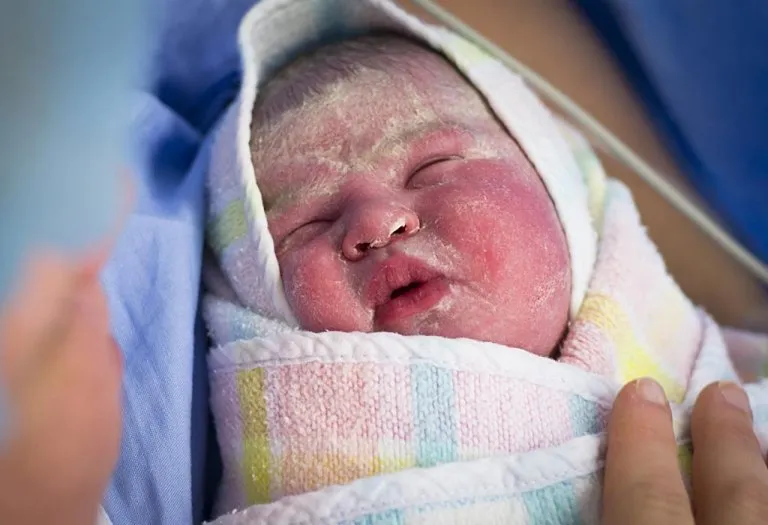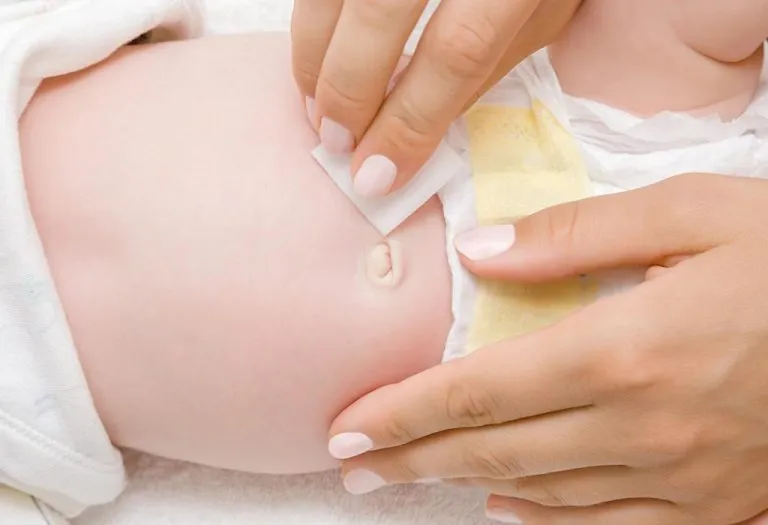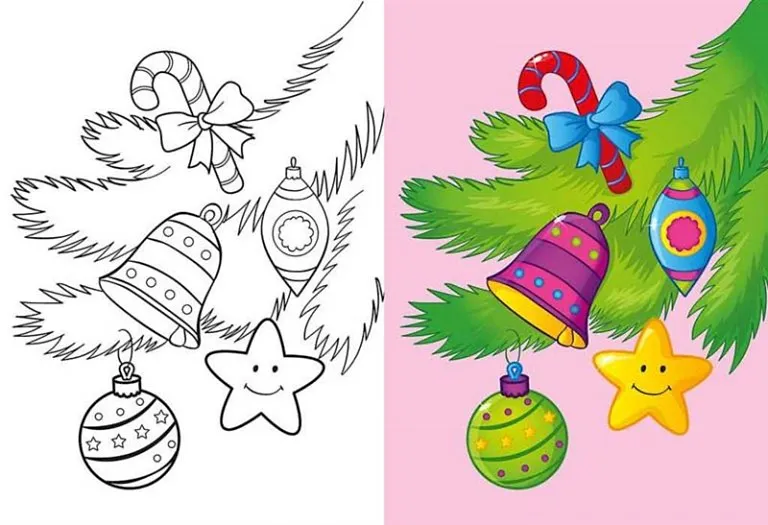Vernix Caseosa – What It Is, Benefits and Risks
When a baby is born, they are often covered in a thick, cheese-like layer called ‘vernix caseosa,’ which may appear unusual at first glance. Many parents might feel the urge to ask the nurse to bathe the baby immediately to remove this substance. However, vernix vernix caseosa offers several benefits to your baby. This protective layer helps to moisturize the baby’s delicate skin, acts as a barrier against infections, and even aids in regulating the baby’s body temperature. So, while it may seem strange, leaving the vernix on baby for a little while can be incredibly beneficial for your baby’s health and well-being.
What Is Vernix Caseosa?
Here’s the vernix caseosa definition. Vernix caseosa, which is also called vernix, is a natural formation on the baby’s skin that can be seen during childbirth. It’s said to keep the formation on the skin for a while before rubbing it away. Vernix caseosa helps babies stay protected from bacteria and infections while keeping the baby’s skin soft and supple (1).
When Does Vernix Develop?
Vernix caseosa tends to form over the baby’s skin during the second or third trimester of the pregnancy (2). Some of the vernix dissolves into the amniotic fluid after 34 weeks of pregnancy, and the remaining of it is removed by the doctor once the baby is born.
What Does It Contain?
Vernix is a thin layer over the baby’s skin that plays a crucial role in protecting the baby’s body. The formation is mostly water content, but apart from water, there is fat content as well as proteins. There are other substances too that help with the baby’s immunity (3).
What Is the Colour of Vernix?
Vernix caseosa is mostly white in colour, but at times, the colour of the vernix may change. Vernix can appear to be yellowish-brown, and at times it may even get a slight greenish tinge to it. The colour can change after the baby has pooped for the first time. By this time, you can wipe the vernix away from the skin.
Does It Wash Away Easily?
It is possible to wash the vernix from your baby’s skin. However, it is best not to wash it away immediately. You can wait for a while and wipe it away from your baby’s skin instead of washing it away. The WHO has even said that the vernix caseosa after birth can be on the baby for as long as 24 hours. In fact, even weeks later, you might still find some layers of it here and there. It might not completely come out when you wipe it for the first time.

Should You Delay a Newborn’s First Bath?
The vernix caseosa keeps the baby’s skin soft and protected. Although many parents prefer that the baby should be taken for an immediate wash, it is best to delay the first bath for as much time as possible, as the vernix protects the baby during that time (4).
What If the Vernix Caseosa Is Missing?
If the labour is delayed, vernix caseosa may hardly be there on the baby. It can be completely missing, too. This might happen because the vernix may slowly dissolve in the amniotic fluid over time, especially when the delivery time approaches.
Benefits of the Vernix Caseosa
The vernix caseosa has many amazing benefits for the mother and even for the little baby. Some of them are explained below (5):
1. Helps in Delivery
As the vernix caseosa is quite slippery, it may act as a lubricant and help the pregnant woman deliver the baby with ease. Due to its presence, the baby may slide out of the birth canal a lot easier.
2. Fights Germs
Vernix caseosa also helps in fighting bacteria and other germs that are quite harmful to the baby. This is also because the vernix has an antibacterial property and highly protects the baby from any such dangers.
3. Acts as a Moisturizer
Vernix caseosa acts as a natural moisturizer that helps keep the child’s skin smooth and soft. Although it may be unpleasant to look at, it keeps the baby’s skin soft and healthy. Without the vernix, the baby’s skin might get chapped and even have wrinkles.
4. Keeps the Body Warm
In many cases, babies are kept in a warm place right after they are born because their bodies are still getting used to the temperature around them. The vernix is a natural layer that helps the baby stay warm.
6. It Protects the Baby
Vernix caseosa is unique to human beings. It has many amazing properties, including antimicrobial and anti-inflammatory properties that protect the baby.
Possible Risks of Keeping Vernix on a Baby’s Skin After Delivery
In most situations, allowing vernix to remain on a newborn’s skin is unlikely to cause harm. However, for infants with meconium staining or those born to mothers with chorioamnionitis, leaving vernix on the skin for extended periods could potentially increase the risk of bacterial overgrowth. Additionally, in certain cases, retaining vernix might elevate the risk of the baby acquiring maternal infections, including hepatitis or HIV.
Excessive vernix on the baby’s skin can, in rare instances, lead to complications such as neonatal aspiration syndrome (6). There have also been isolated reports of vernix caseosa contributing to conditions like granuloma, peritonitis, or even fetal heart infections in babies delivered via cesarean section. The potential risks can vary based on the infant’s health and circumstances, so it’s important to weigh the benefits and risks of leaving vernix on the skin before making a decision.
FAQs
1. Does vernix caseosa have a scent, and what does it mean?
Some parents notice a mild, slightly sweet scent from their newborn’s vernix. This natural aroma is thought to play a role in bonding, as it may help parents recognize and connect with their baby (7). The scent of vernix caseosa in newborns is temporary and fades as the vernix is absorbed or washed away.
2. Can vernix caseosa be collected and stored for later use?
While vernix is beneficial for newborns, there is no medical recommendation or practical method to collect and store it for future use. Its protective properties are most effective immediately after birth, and it naturally absorbs into the baby’s skin within the first 24-48 hours.
Vernix caseosa is beneficial for a baby’s skin and should not be washed away right away. You can ask the nurse to do it after some time. The vernix may even be present in skin folds days or weeks after the baby’s birth, and it’s alright. You can easily wipe it away.
References/Resources:
1. Bamalan. O, Moore. M, Menezes. R; Vernix Caseosa; National Library of Medicine; https://www.ncbi.nlm.nih.gov/books/NBK559238/
2. Infographic: Changes During Pregnancy; American College of Obstetricians and Gynecologists; https://www.acog.org/womens-health/infographics/changes-during-pregnancy
3. Pickens. W, Warner. R, Boissy. Y, Boissy. R, Hoath. S; Characterization of Vernix Caseosa: Water Content, Morphology, and Elemental Analysis (Journal of Investigative Dermatology); Science Direct; https://www.sciencedirect.com/science/article/pii/S0022202X15410528; November 2000
4. Delayed Bathing; International Childbirth Education Association Position Paper; https://icea.org/wp-content/uploads/2020/01/ICEA-Position-Paper-Delayed-Bathing-PP.pdf
5. Singh. G, Archana. G; Unraveling the mystery of vernix caseosa (Indian Journal of Dermatology); National Library of Medicine; https://pmc.ncbi.nlm.nih.gov/articles/PMC2763724/; 2008
6. Meconium Aspiration Syndrome; Cleveland Clinic; https://my.clevelandclinic.org/health/diseases/24620-meconium-aspiration-syndrome
7. Uebi. T, Hariyama. T, Suzuki. K, Kanayama. N, et al.; Sampling, identification and sensory evaluation of odors of a newborn baby’s head and amniotic fluid; Scientific Reports; https://www.nature.com/articles/s41598-019-49137-6; September 2019
Also Read:
Peeling Skin in Newborns
Mongolian Spot in Newborns
Skin Discolouration in Babies
Milia in Newborn and Babies
Was This Article Helpful?
Parenting is a huge responsibility, for you as a caregiver, but also for us as a parenting content platform. We understand that and take our responsibility of creating credible content seriously. FirstCry Parenting articles are written and published only after extensive research using factually sound references to deliver quality content that is accurate, validated by experts, and completely reliable. To understand how we go about creating content that is credible, read our editorial policy here.






















